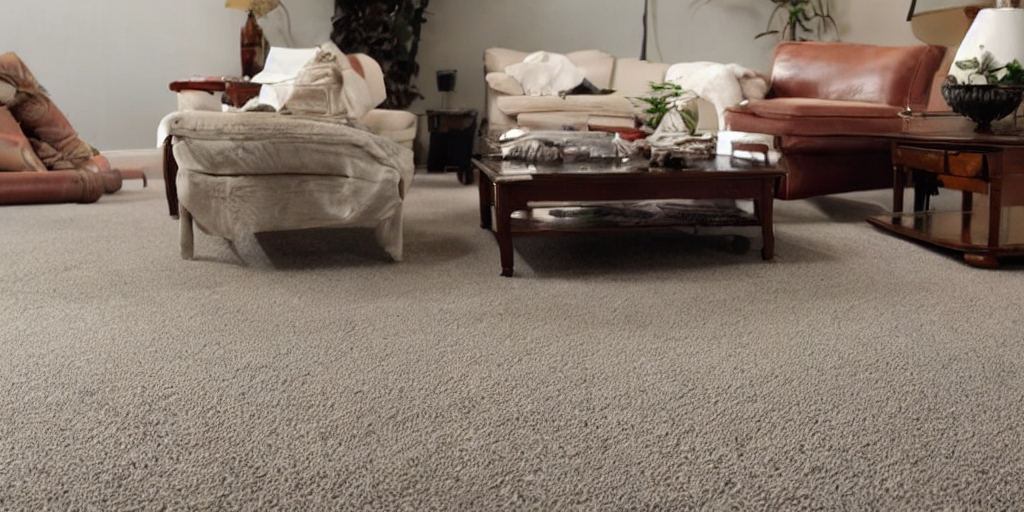Introduction
Carpet water damage is a common yet troublesome issue that many homeowners face. Whether it’s due to clean water flooding, sewage backups, or gradual leaks, the consequences can be significant if not addressed promptly and effectively. In this guide, we will delve into the various causes of carpet water damage, how to spot it, and the steps to take for cleaning, drying, and restoring your carpet to its former glory.
Causes of Carpet Water Damage
Plumbing Leaks: One of the primary culprits behind carpet water damage is plumbing leaks. Whether it’s a slow drip from a hidden pipe or a burst pipe causing flooding, plumbing issues can wreak havoc on your carpeting.
Foundation and Structural Leaks: Water seeping through the foundation of your home or leaks in structural components can also lead to water damage in your carpet. Finished basements are particularly susceptible to this type of damage during heavy rainfall or storms.
Blocked Gutters: Clogged gutters can cause water to overflow and pool near the foundation of your home, eventually seeping into the carpeted areas. Regular gutter maintenance can help prevent this issue.
Sewage Backup: Perhaps the most unpleasant cause of carpet water damage is sewage backup. When sewage overflows into your home, it not only damages your carpet but also poses serious health risks due to the contaminants present in black water.
Also Read: Houston Water Damage Restoration: Restoring Peace of Mind
Spotting Water Damage on a Carpet
Soggy Texture: A telltale sign of water damage is a soggy texture in the carpet. If your carpet feels excessively wet or releases water when pressed, it’s likely water-damaged.
Wrinkling and Puckering: Water damage can cause the adhesive or glue used during carpet installation to weaken, resulting in wrinkles and puckering. Additionally, the floorboards underneath may also show signs of damage.
Discoloration and Fading: Water-damaged carpeting may exhibit discoloration and fading, often appearing as dark spots or circles. This could indicate the onset of mold growth, which requires immediate attention.
Unpleasant Odor: A musty or moldy odor emanating from the carpet is a clear indicator of water damage. Ignoring this odor could lead to further mold growth and health issues.
Effects of Water on Carpets
Mold Growth: One of the most significant risks associated with water-damaged carpets is mold growth. Moisture trapped within the carpet fibers and padding creates an ideal environment for mold to thrive, posing health risks to occupants and structural damage to the building.
Cleaning and Drying Water-Damaged Carpets
Dealing with Clean Water Damage: When facing clean water damage, such as rainwater flooding or appliance malfunctions, swift action is essential. Start by extracting excess water using pumps or buckets, then focus on drying the carpet thoroughly. Opening windows, using fans, and employing dehumidifiers can help accelerate the drying process.
Addressing Sewage Overflows: In the case of sewage backups, immediate action is crucial due to the health hazards associated with black water. Protective gear should be worn, and thorough cleaning and disinfection are necessary before drying the carpet. Professional assistance may be required to ensure safe and effective restoration.

Replacement Considerations
Extent of Water Damage: Whether or not to replace the water-damaged carpet depends on the severity of the damage. If the carpet, padding, and subflooring are saturated, replacement may be the best option to prevent mold growth and structural issues.
Duration of Exposure: The longer water sits on the carpet, the greater the likelihood of mold growth and irreversible damage. If the carpet has been wet for an extended period, replacement is often necessary.
Type of Water Damage: Clean water damage may be salvageable with proper cleaning and drying techniques. However, carpets damaged by sewage backups pose significant health risks and may require replacement to ensure safety.
Also Read: Water Damage Restoration Portland Oregon: Expert Solutions
Conclusion
In conclusion, carpet water damage can have serious consequences for both your home and your health. By understanding the causes and signs of water damage, as well as the necessary steps for cleaning, drying, and replacement. You can mitigate the risks and restore your carpet to its original condition. Remember, swift action is key when dealing with water damage to prevent further complications and ensure a safe and healthy environment for you and your family.










